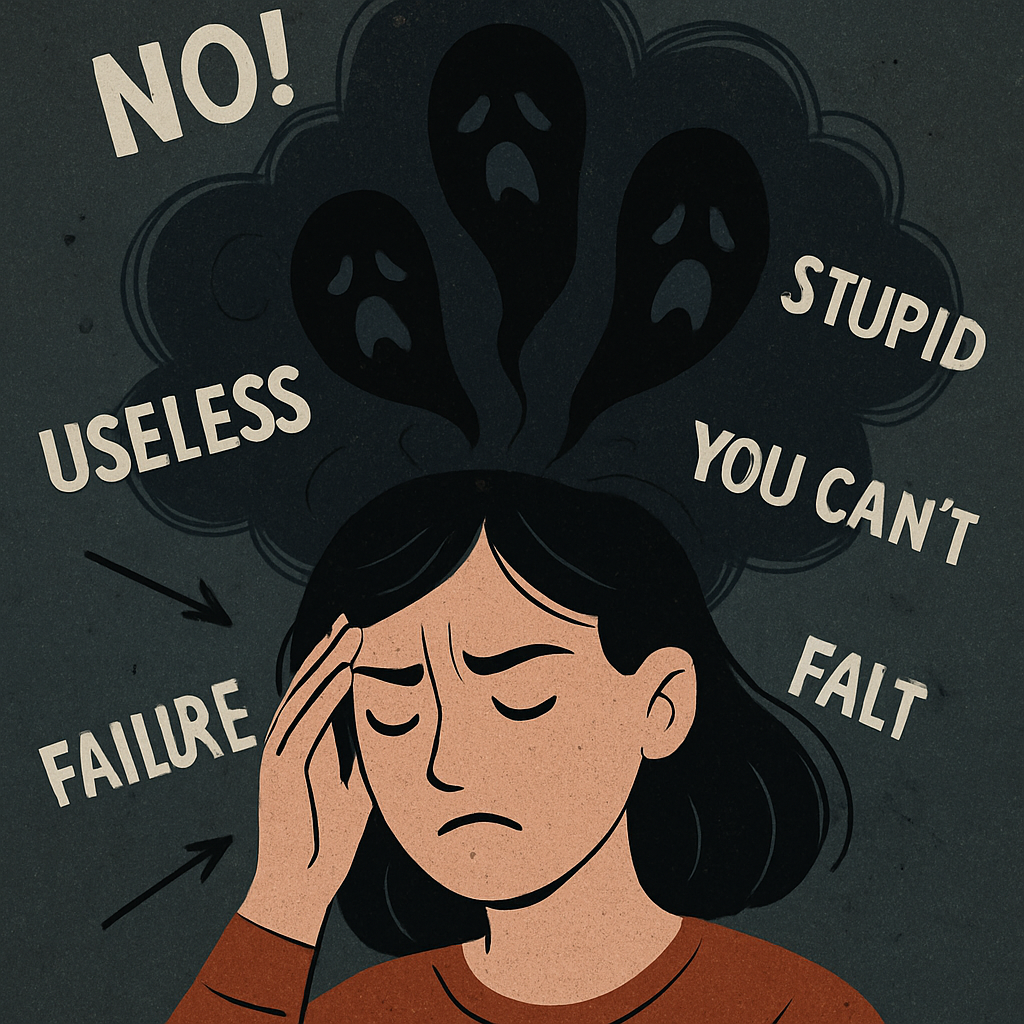Decoding Negative Thoughts
On 4-21-25, psychologist Yasmine Saad delivered an excellent Ted Talk titled, “How To Make Sense of Your Negative Thoughts.” She said the intrusive negative thoughts we sometimes hear could be reinterpreted. Those voices are not our friends, and not necessarily our enemies, but rather harsh messengers, trying to deliver information. People respond to those messengers in one of three ways:
“First, they just ignore them. They let them pass like clouds in the sky. Second, they replace them with positive thoughts. Third, they simply accept them. They take them at face value and drown with them.
Well, whether you replace them, accept them or ignore them, you’re thinking your negative thoughts are detrimental to you. You have created the enemy within. Is that what you want? Fight the enemy within? I certainly don’t want that.
What if our negative thoughts were not an enemy, nor a friend, but a messenger here to deliver information to you? Our negative thoughts are trying to call our attention. They have something precious to deliver to us. One thought carries your current state, your desired future, the path you take to get from one to the other, and the obstacle along the way.
To reiterate, Saad says our negative thoughts reveal four things to us: our current status, our desired goal, the path we’re taking, and the obstacle opposing us. All that from one negative thought! But we usually misinterpret the encrypted message. Saad uses several excellent illustrations.
One woman comes home from a long day at work. She sees the pile of dirty dishes in the kitchen and says, “I’m so frustrated!” But her real problem is not the dishes; she’s working too hard.
Another woman sees the same dishes after a long day’s work and says the same thing: “I’m so frustrated!” But her problem may be entirely different. Perhaps she needs cleanliness to think. If she cleans up the dishes, she’ll need to clean the carpet next. But even then, her deeper problem will remain: a cluttered mind. She needs external organization to begin any internal processing.
I experimented with Saad’s idea, choosing a few negative thoughts of my own. For each one, I asked myself if this persistent negative thought were a message from myself to myself, what might it mean. One example of mine:
Thought: I’ll never be truly joyful because, no matter what, I’ll always aim higher than I can reach and never be satisfied.
My attempt at decoding the four pieces of the message:
- Status: I’m not living very joyfully.
- Desired future: I’d like to “Be joyful always!” (Philippians 4:4)
- Path: I’m trying to find joy by achievement.
- Obstacle: My goal is a moving target, never to be reached.
My conclusion: Achievement is good, and pressing hard is my strength, but peace and joy will be found not through accomplishments but through right relationship with God.
Now you try it. Decode a message! Leave a comment if you benefited from Saad’s idea.
Please consider subscribing to my newsletter!
I need to expand to an audience of 10,000 readers!
If you liked this post, please send it to a friend. If the reading audience grows, agents and publishers become suddenly far more keen on joining in the Adventures of TAT!
Copy URL to Clipboard





